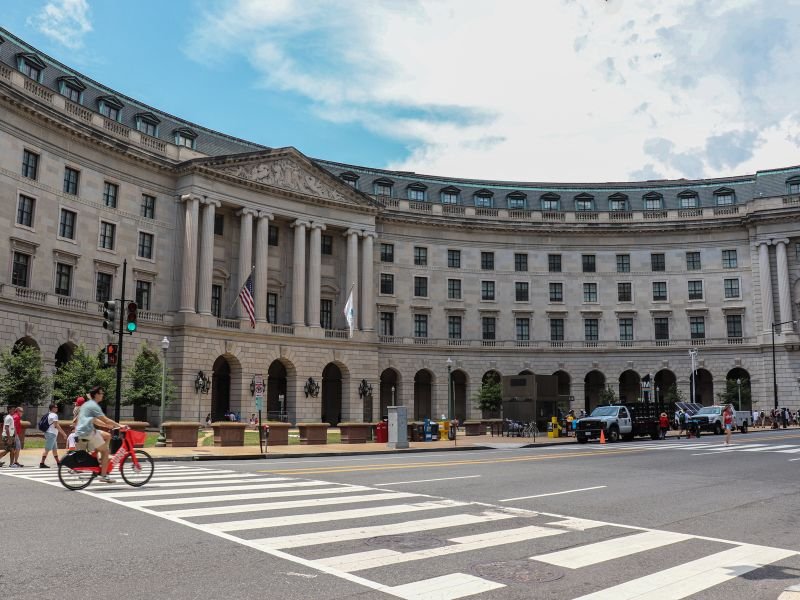The H1B visa is a temporary work visa that enables U.S. employers to hire foreign professionals for specialized roles. Although it serves as a gateway for skilled workers to gain employment in the U.S., it is subject to restrictions, such as limited duration and dependency on employer sponsorship. For many, securing an H1B is just the first step toward establishing a long-term career in the country.
Obtaining a Green Card, however, offers a more permanent solution by granting lawful permanent residency. Unlike the H1B, a Green Card provides greater stability, flexibility, and opportunities, including the ability to change jobs freely and pursue citizenship. For H1B holders, transitioning to permanent residency is often a key goal, as it eliminates the uncertainties associated with temporary visa status and opens doors to long-term growth in the U.S.
Understanding the H1B Visa
The H1B visa is designed for foreign professionals in specialized fields such as IT, engineering, and finance. It is valid for three years and can be extended for an additional three years, totaling six years. One of its key features is the “dual intent” provision, allowing holders to apply for permanent residency without jeopardizing their H1B status.
Why Transition from H1B to Green Card?
Transitioning to a Green Card offers several advantages:
-
Permanent Residency: Eliminates the need for visa renewals and provides long-term stability.
-
Employment Flexibility: Allows for job changes without the need for employer sponsorship.
-
Family Benefits: Enables family members to live, work, and study in the U.S.
-
Path to Citizenship: After five years as a Green Card holder, one can apply for U.S. citizenship.
Green Card Categories Suitable for H1B Holders
H1B visa holders typically apply for employment-based Green Cards, categorized as:
-
EB-1: For individuals with extraordinary abilities, outstanding professors, and multinational executives.
-
EB-2: For professionals with advanced degrees or exceptional abilities.
-
EB-3: For skilled workers, professionals, and other workers.
Each category has specific eligibility criteria and processing times.
Step-by-Step Process of Transitioning from H1B to Green Card
The transition involves several steps:
-
PERM Labor Certification: The employer must demonstrate that there are no qualified U.S. workers for the position.
-
I-140 Petition: The employer files Form I-140, Immigrant Petition for Alien Worker, with the U.S. Citizenship and Immigration Services (USCIS).
-
Priority Date: Upon I-140 approval, a priority date is assigned, determining the applicant’s place in the Green Card queue.
-
Adjustment of Status or Consular Processing: Depending on the applicant’s location, they will either adjust their status within the U.S. or undergo consular processing abroad.
PERM Labor Certification Explained
The Program Electronic Review Management (PERM) process is the first step in obtaining an employment-based Green Card. It involves:
-
Prevailing Wage Determination: The employer must obtain a prevailing wage determination from the Department of Labor (DOL) to ensure the wage offered meets industry standards.
-
Recruitment Process: The employer must conduct a recruitment process to test the U.S. labor market, including:
-
Placing job advertisements in newspapers and online platforms.
-
Posting the job with the state workforce agency.
-
Conducting internal postings and employee referral programs.
-
If no qualified U.S. workers are found, the employer can file the PERM application with the DOL.
I-140 Petition: Immigrant Petition for Alien Worker
After obtaining PERM certification, the employer files Form I-140 with USCIS. This petition establishes the employee’s eligibility for an employment-based Green Card. Key considerations include:
-
Filing Fees: The employer is responsible for the filing fees associated with Form I-140.
-
Premium Processing: Employers can opt for premium processing to expedite the petition’s review.
-
Portability: If the I-140 is approved and the adjustment of status application has been pending for 180 days, the employee may change jobs without affecting the Green Card process.
Adjustment of Status vs. Consular Processing
Once the priority date becomes current, applicants can choose between:
-
Adjustment of Status (AOS): For those already in the U.S., filing Form I-485 allows them to adjust their status to permanent resident without leaving the country.
-
Consular Processing: For those outside the U.S., this involves attending an interview at a U.S. consulate in their home country.
Each option has its pros and cons, and the choice depends on individual circumstances.
Understanding Priority Dates and Visa Bulletin
The priority date is crucial in determining when an applicant can proceed with the final steps of the Green Card process. The U.S. Department of State publishes a monthly Visa Bulletin, indicating which priority dates are currently being processed. Applicants must monitor this bulletin to know when their priority date becomes current.
Challenges and Common Delays
While the path from H1B to Green Card is well-defined, several challenges can arise along the way:
Backlogs by Country of Birth: Individuals born in countries with high demand for U.S. Green Cards—such as India and China—often face long wait times due to per-country caps. In some cases, applicants wait several years, even after I-140 approval.
PERM Delays or Audits: The Department of Labor may audit the PERM application, which can significantly delay the process. This often occurs when inconsistencies arise or the job requirements seem tailored too narrowly to a specific individual.
Job Loss During the Process: If an H1B worker loses their job before the I-140 is approved or the adjustment of status is filed, the Green Card process could be jeopardized. USCIS allows a 60-day grace period to find a new employer, but timing becomes critical.
H1B Expiration Before Green Card Approval: If your H1B status expires before your Green Card is approved, you may need to apply for an extension. Fortunately, under the American Competitiveness in the Twenty-First Century Act (AC21), many H1B holders can extend their stay beyond the standard 6-year limit if their Green Card process is ongoing.
For more information on backlogs and delays, check the U.S. Department of State’s Visa Bulletin and USCIS Processing Times.
Alternatives and Workarounds During the Waiting Period
For H1B visa holders facing long waits, several strategies can provide flexibility and maintain legal status in the U.S.:
H1B Extensions Beyond 6 Years: If your Green Card application is pending and your PERM or I-140 was filed at least 365 days before your H1B max-out date, you may qualify for one-year or three-year extensions under the AC21 Act.
Using EAD and Advance Parole (AP): Once Form I-485 is filed, applicants can receive an Employment Authorization Document (EAD) and Advance Parole (AP), which allow them to work and travel while the application is pending—no longer relying solely on H1B status.
Switching to Other Non-Immigrant Visas: In rare cases, individuals may transition to other visa categories like the O-1 (for individuals with extraordinary abilities) if their field of expertise allows. However, such moves should be done carefully with legal guidance.
Maintaining H1B Status Until Green Card Approval: Some applicants choose to maintain their H1B status even after filing I-485 as a safety net in case of application denial or delays. This dual-track approach can offer more stability.
You can learn more about employment authorization and travel documents from USCIS EAD/AP page.
Family Members in the Green Card Process
Your family doesn’t have to be left behind in the Green Card journey. H1B visa holders can include their spouse and unmarried children under 21 in the Green Card application:
H4 Visa Holders: Spouses and children of H1B workers usually hold H4 visas. Once you file Form I-485, they can file their own adjustment of status applications as derivative beneficiaries.
Employment Authorization for H4 Spouses: Under certain conditions, H4 spouses can apply for work authorization (H4 EAD). Eligibility generally requires the H1B holder to have an approved I-140.
Travel and Immigration Benefits: After receiving advance parole, spouses and children can travel internationally while waiting for Green Card approval.
More about dependent visas and employment can be found at the USCIS H4 Visa Information Page.
Tips for a Smooth Transition
Here are some practical recommendations to make your transition from H1B to Green Card as seamless as possible:
-
Start Early: Initiating the process early (within the first few years of H1B status) can help avoid expiration-related issues.
-
Work with an Experienced Immigration Attorney: While some companies handle this internally, a lawyer can provide tailored advice, especially in complex situations.
-
Maintain Consistent Documentation: Keep copies of all employment letters, pay stubs, I-797 notices, and previous immigration filings. USCIS often asks for these during the process.
-
Communicate Clearly with Employers: Since employers play a key role in initiating the process, maintaining good communication and understanding your company’s immigration policy is crucial.
-
Stay Updated on Policy Changes: U.S. immigration laws and policies can change frequently. Bookmark official websites like USCIS and the Department of Labor to stay informed.
Frequently Asked Questions (FAQs)
Can I apply for a Green Card without employer sponsorship?
Yes, if you qualify under self-petitioning categories like EB-1A (extraordinary ability) or National Interest Waiver (EB-2 NIW), you may not need an employer.
What happens if I lose my job during the process?
You may have a 60-day grace period to find a new sponsor. If your I-140 has been approved and the I-485 is pending for 180+ days, you might be eligible to port your Green Card application to a new employer under AC21 provisions.
Can I travel internationally while my I-485 is pending?
Yes, but only if you have received Advance Parole (AP). Traveling without it could lead to denial of your adjustment application.
How long does the entire process take?
It varies. For nationals of countries not affected by backlogs, the process could take 1–3 years. For others, especially India and China, it can take 5–10+ years due to visa caps.
Conclusion
The journey from H1B visa to Green Card can be complex, but it is entirely achievable with proper planning and guidance. While the process involves multiple steps—PERM labor certification, I-140 petition, adjustment of status—it ultimately opens the door to permanent residency, professional flexibility, and a future in the United States.
As immigration laws continue to evolve, staying informed and proactive is key. Partnering with a supportive employer and legal expert can make all the difference in successfully navigating the U.S. immigration system.
For the most up-to-date information and official resources, always refer to USCIS, the Department of State’s Visa Bulletin, and the Department of Labor.







